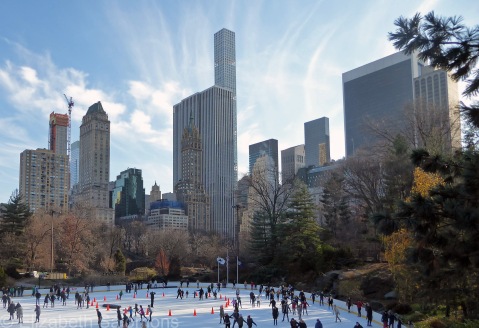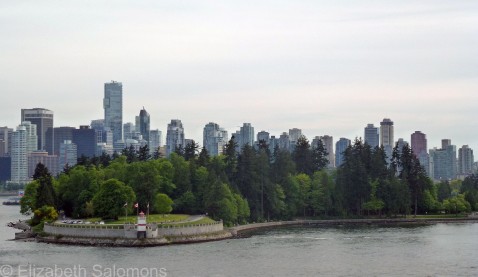Don Valley Brick Works

And … I’m back.
Back in Canada, that is.
After 10 days on walkabout in southern Germany and Belgium, I have my feet firmly planted once again on Canadian soil. It’s good to be here.
My week in Toronto is mostly about work, and I have to remind myself I’m still allowed to play tourist in a city I know so well.
Which is why I’m posting this photo. The friend whose home is my home when I’m in Toronto has been telling me about her new favourite place for months now, and she showed it to me last Saturday afternoon. The Don Valley Brick Works is an old quarry and brick factory that provided most of the bricks for Toronto’s oldest and finest buildings for over a hundred years. It ceased production in the 1980s and has been converted into a park and cultural centre since my last visit to Toronto.
I love city parks, and this one’s a gem.
Through My Lens: Central Park in Winter

The other cool thing about visiting New York City in the winter? All those wonderful outdoor ice rinks.
Like this one in Central Park.
Stanley Park Windstorm
Ten years ago today, a massive windstorm devastated Stanley Park. Hurricane-force winds off English Bay levelled 41 hectares of forest, about 10,000 trees in all, some of which were more than 500 years old. It was the most violent windstorm to hit Stanley Park in 40 years.
Although it was overwhelming to see the devastation, the forest was long overdue for a regeneration. The wide open spaces changed the look of parts of the park and increased the diversity of both plant life and animals. Woodpeckers, for example, are now thriving. More than 15,000 trees and shrubs were planted by park staff and volunteers. I was walking near Prospect Point recently and it struck me how tall those young trees are already.
I was out of town on December 15, 2006, but I remember taking a walk through the park on Christmas Day — as much as it was possible to walk through the park since every trail was blocked by fallen trees — with my mouth open wide in shock. The seawall was also extensively damaged and remained closed for some 18 months until the repairs could be finished and the cliff tops above the seawall stabilized.
This photo is of a tree that came down near the Georgia Street entrance to Stanley Park. It lies near where it fell, trimmed of its foliage, and has been left as a memorial to that storm. It is now a popular photo stop for tourists, who I am sure have no idea why it is lying there.

Missing Stanley

Oh, who am I kidding?
I’m no suburbanite.
Walking through Deer Lake Park while I’m hanging out in Solo is all well and fine, but I couldn’t wait to get back to my own urban park. (That would be Stanley.) I even felt a pang while crossing the Lion’s Gate Bridge the other day on my way back from snowshoeing with a friend. I looked at the wide expanse of Stanley Park from high above Burrard Inlet and said, “Ohhhh, I miss my park!”
What I like best about “my” park is how I can fit a walk through it in between errands. Like today. I returned some library books, headed over to Lost Lagoon to say hello to the ducks and to check if the river otters were out (they were), walked back along the beach, picked up a few groceries, went to the post office, and then came home.
And what did I see on that walk?
(What didn’t I see?)
Lots and lots of trees. The beach.
Ducks (including mallards, Wood Ducks, American Wigeons, American Coots, Common Mergansers, and Lesser Scaups), Canada Geese, a couple of Spotted Towhees, the above-mentioned river otters, and a raccoon.
And that was a short walk.
Oh. And, um, daffodils.
In full bloom.
Deer Lake Park in Winter

So remember when I told you how Deer Lake Park in Burnaby was an all-season park and I intended to go back and explore it some more? Yeah, I know. I forgot too.
Oops.

I’m hanging out in Solo again, which means I have no excuse to not get myself back to this park. And so, one afternoon last week when there was fresh snow on the ground, I went for another walk with the friend who introduced me to Deer Lake Park.
It was stunning. I’m rather partial to my own park (that would be the one they call Stanley), but whenever I get a bit uppity about the park in my backyard, something or someone reminds me of how many fabulous parks there are all over Greater Vancouver.
Have a look at what I saw that afternoon.
Nelson Park
Stanley Park gets a lot of attention from Vancouver’s visitors, but it’s not the only park in Vancouver’s West End. One of my favourite parks ― so much so I try to walk through it each and every time I head downtown ― is Nelson Park.
Nelson Park is a small park, but it’s a busy park. Only one city block big, it shares that space with Lord Roberts Annex (a K–3 primary school) and its playground, which takes up about a quarter of the block. Several dozen community garden plots line the park’s walkways and the West End Farmer’s Market is held alongside the park every Saturday from May to October. Because the park is located kitty-corner to St. Paul’s Hospital and across the street from the Dr. Peter Centre (an assisted-living residence for adults living with HIV/AIDS), it’s not unusual to see patients making use of the park on warm, summer days.
But my favourite corner of Nelson Park is the fenced-in off-leash dog park, one of a handful in Vancouver’s West End. Walk past it after work any day of the week to witness Doggy Happy Hour ― complete with wagging tails.
Here is a photo of Nelson Park in all its fall glory.

A Forest in the City

After I wrote my post about Cathedral Grove, I started thinking about the forest I live next door to. I’m talking about the one in Stanley Park. (You know, the wee park Tripadvisor thinks is # 1 in the world.)
What makes Stanley Park so special is it is as much forest as it is park. I can’t think of another city with a forest in its centre that equals the area of its downtown business core. (If you know of one, please tell me. I would love to visit.)
The peninsula that is Stanley Park has been logged several times, but today it is as dense with trees as it was 150 years ago. There are about half a million of them, ranging in height up to 75 metres.
Truth is, windstorms have done more damage to the trees in Stanley Park than logging. There have been three notable storms: one in 1934, another in 1962, and the one I remember ― the windstorm of December 15, 2006. Winds of 115 kilometres per hour downed over 10,000 trees (total tree area lost was 41 hectares), with most of the damage to the western side of the peninsula, particularly around Prospect Point. I took a long walk through the park on Christmas Day 2006 with my sister and my heart sank when I saw the damage. All of the trails through the park were impassable; fallen trees lay across them like pick-up sticks. Imagine if Stanley Park had been picked up by its four corners, given a good shake, and then set down again. That is what it looked like from the ground.
From the air or the water, it looked like someone had come through the park with a scythe. Many of the trees still lie where they fell. I took this photo sometime during the winter of 2011, more than five years later.

But a few good things came out of that storm. Like a new and much safer parking lot at Prospect Point. There would have been a public outcry had the Park Board decided to cut down trees to make way for a much-needed parking lot, but once the trees were down ― well, there came an opportunity.
I benefitted from that storm, too. Because the seawall was closed for 18 months (so that it could be repaired and the cliffs above the seawall on the western edge of the park stabilized), I spent the summer of 2007 exploring the interior of the park ― something I had never bothered to do until then. Stanley Park’s seawall is so accessible ― and so beautiful ― that visitors to Vancouver (and one local blogger) rarely take the time to explore the interior trails. There are some 27 kilometres of them criss-crossing the park, most of which have their origins as skid roads used to skid out the cut logs. They all have names; one of them is called Cathedral Trail. (Which is why I started thinking of the forest in the city after writing my post about Cathedral Grove.)
A couple of years ago, Vancouver City Council enacted a smoking ban in the city’s parks. For good reason. It has been said that if a fire were to ever get out on control in Stanley Park during one of our hot, dry summers, the forest would be gone in less than an hour.
What a shame that would be.

Through My Lens: La Fontaine

Fountains say “summer” to me — even though I took this photo in the dead of winter. This particular fountain is called Fontaine de l’Observatoire. It’s in the Jardin Marco Polo, which is directly south of the Luxembourg Gardens in Paris.
Through My Lens: Siwash Rock
Big news this week: Tripadvisor named Stanley Park the # 1 park in the world. The world! We beat out both New York’s Central Park and the Luxembourg Gardens of Paris. Not bad, eh?
To celebrate, here’s a photo of Siwash Rock, one of the park’s most photographed attractions. Its Squamish name is Slhx̱i7lsh.

Happy Birthday, Stanley Park!

Stanley Park turns 125 today. The city threw a big party in the park last August to celebrate the occasion, but its actual birthday is today, as it was on September 27, 1888, that the park was first officially opened to the public.
At 1000 acres, Stanley Park is the largest of Vancouver’s parks, and also its most popular. It contains an estimated 500,000 fir, hemlock, and cedar trees, and has three beaches, a lake, a lagoon, an 8.8-km seawall, and many more kilometres of walking trails that meander through its interior.
It’s named after Lord Stanley of Preston, Governor General of Canada from 1888 to 1893.









